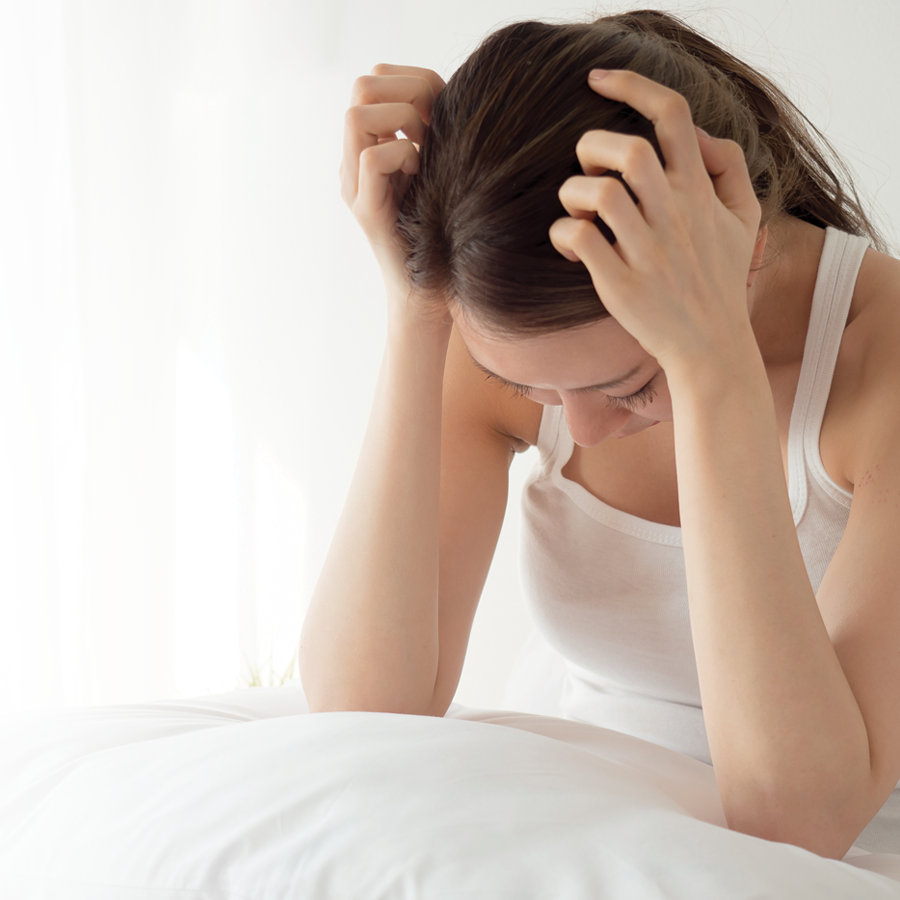Roughly 8% of Canadians aged 12 and over have received a migraine diagnosis. How many other people suffer in silence? It’s hard to say...
A migraine: more than just a headache!
Many people mistakenly believe that a migraine is just a “big headache”. In reality, they are different ailments even if they share certain similarities. Migraines do cause acute pain to the head, but they can also cause other symptoms, such as:
- nausea and vomiting
- vision problems
- dizziness
- sweating
- sensitivity to light, sounds or smells
- concentration problems
- etc.
During migraine attacks, migraine sufferers often only have one thing on their minds: to avoid moving as much as possible and to shut themselves away from the noise and other stimuli.
Migraines can affect not only adults, but children as well. Women are more affected by them than men by a 3:1 ratio.
Migraine attacks
There are several types of migraine attacks. A migraine is sometimes preceded by a warning sign, called a “prodrome”. A prodrome can result in various symptoms for several hours (even up to two days) before the attack: yawning, fatigue, irritability, constipation, food cravings, etc.
A migraine can manifest itself with or without an “aura”. An aura is a symptom that generally occurs less than an hour before an attack. The most common symptoms are visual (bright spots, zig-zags, loss of vision, etc.), sensory (numbness, tingling sensation or sluggishness, etc.) or of a different nature (speech-impairment, muscle weakness, etc.). They last 5 to 20 minutes on average, and rarely more than an hour. Caution: if you experience these types of symptoms for the first time, you must see a doctor.
This is followed by the onset of pain on one side. Pain sometimes spreads to the rest of the head. A migraine attack can last from a few hours to a few days in severe cases. Migraine attacks occur repeatedly, and migraine sufferers learn to recognize them. Caution: all headaches that seem unusual or that concern you should be assessed by a doctor.
Triggers
Migraines can be triggered by certain factors that vary from one person to the next. The presence of several triggers in the same day increases the risk of an attack. Here are some examples:
- certain foods or drinks (e.g., wine, beer, chocolate, nuts, aged cheeses)
- hormonal changes (e.g., during ovulation or menstruation)
- fatigue and stress
- physical activity
- cigarette smoke
- strong odours
- medications (e.g., contraceptives)
Migraines and medications
To date, there is no medication known to “cure” migraine sufferers. However, some medications can ease symptoms, including acute pain. Over-the-counter medications, like acetaminophen or anti-inflammatory drugs, can often prove to be useful.
The use of prescribed medications (such as those found in the “triptan” class of drugs) is often necessary to control symptoms. They are taken at the onset of an attack. Each person reacts differently to medication, so there is no official treatment that is more effective than the others. That said, the odds are that one of the treatments available will help to ease migraine pain, enabling migraine sufferers to return to their daily activities as soon as possible.
When migraines are frequent or intense, the doctor may prescribe a daily preventive treatment intended to decrease the frequency, duration and severity of attacks. In this particular situation, it is often a more advisable treatment solution than taking “rescue” medication too much or too often. A preventive treatment can take up to 3 to 4 weeks or even longer, before it starts to work. It is very useful to write down on a calendar when the attacks occur in order to monitor the effects of the treatment.
General advice
Migraine attacks are a significant reason for having to interrupt daily activities. They must be taken seriously. Here is some practical advice if you suffer from migraines:
- Identify “your” triggers and avoid them as much as possible.
- Adopt a healthy lifestyle.
- Learn relaxation techniques and put them into practise when appropriate.
- When a migraine occurs, rest and avoid stimuli such as light and noise.
- Take medication to ease your symptoms as soon as they appear. Don’t wait unnecessarily. If over-the-counter medication is ineffective, speak to your doctor, who may prescribe other medication.
- Try sleeping if the attack is not under control. Sleep sometimes helps to assuage the attack.
Speak to your pharmacist for additional information about migraines and the ways to prevent and treat them.

